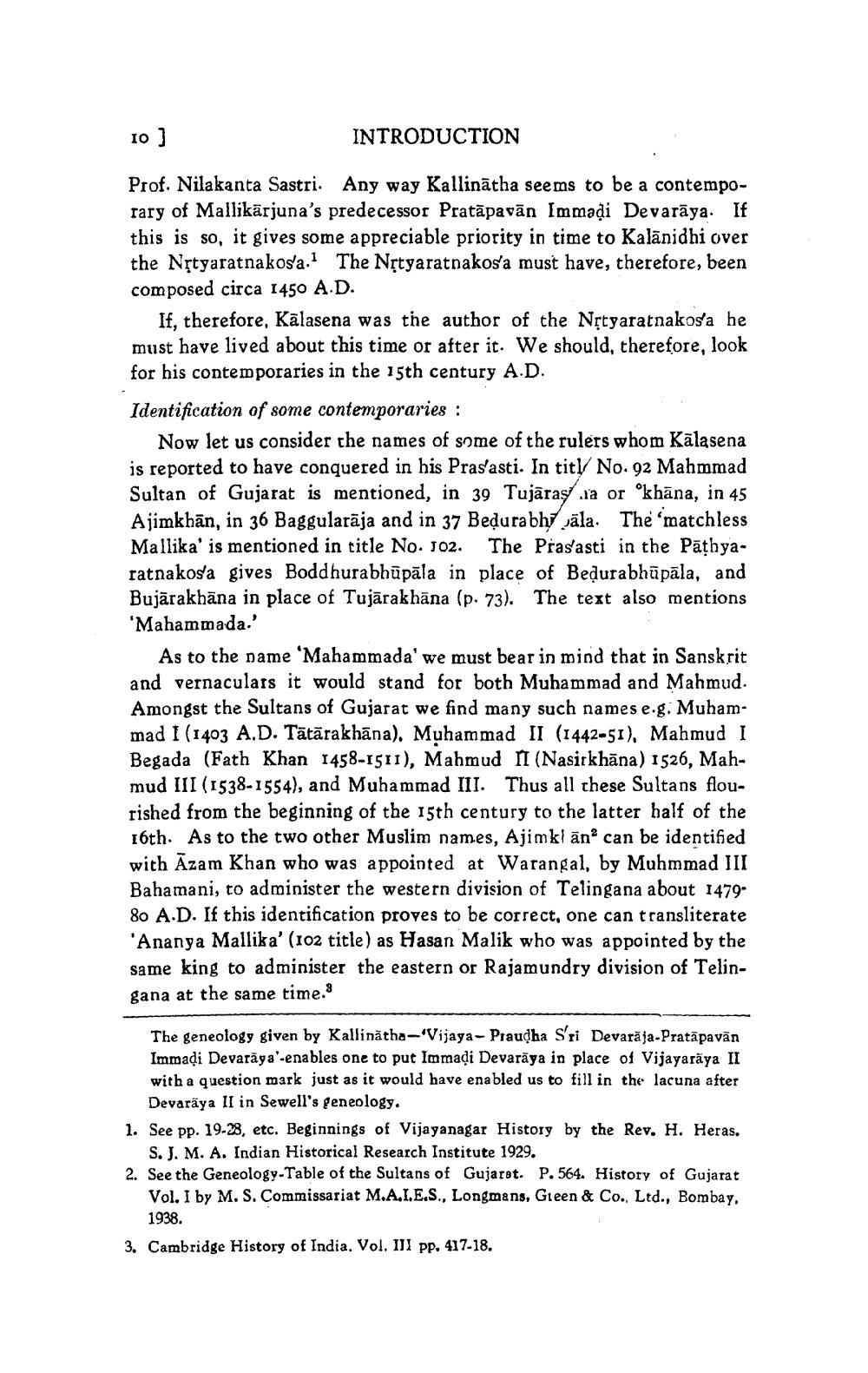________________
10 ]
INTRODUCTION
Prof. Nilakanta Sastri. Any way Kallinātha seems to be a contemporary of Mallikarjuna's predecessor Pratāpavān Immadi Devarāya. If this is so, it gives some appreciable priority in time to Kalānidhi over the Nrtyaratnakosa. The Nrtyaratnakosa must have, therefore, been composed circa 1450 A.D.
If, therefore, Kālasena was the author of the Nộtyaratnakosa he must have lived about this time or after it. We should, therefore, look for his contemporaries in the 15th century A.D.
Identification of some contemporaries :
Now let us consider the names of some of the rulers whom Kālasena is reported to have conquered in his Prasasti. In tity No. 92 Mahmmad Sultan of Gujarat is mentioned, in 39 Tujāras ja or "khāna, in 45 Ajimkhān, in 36 Baggularāja and in 37 Bedurabh jāla. The 'matchless Mallika' is mentioned in title No. 102. The Prasasti in the Pathyaratnakosa gives Boddhurabhūpāla in place of Bedurabhūpāla, and Bujārakhāna in place of Tujārakhāna (p. 73). The text also mentions 'Mahammada.'
As to the name 'Mahammada' we must bear in mind that in Sanskrit and vernaculars it would stand for both Muhammad and Mahmud. Amongst the Sultans of Gujarat we find many such names e.g. Muhammad I (1403 A.D. Tātārakhāna). Muhammad II (1442-51), Mahmud I Begada (Fath Khan 1458-1511), Mahmud II (Nasirkhāna) 1526, Mahmud III (1538-1554), and Muhammad III. Thus all these Sultans flourished from the beginning of the 15th century to the latter half of the 16th. As to the two other Muslim names, Ajimklāno can be identified with Āzam Khan who was appointed at Warangal, by Muhmmad III Bahamani, to administer the western division of Telingana about 147980 A.D. If this identification proves to be correct, one can transliterate 'Ananya Mallika' (102 title) as Hasan Malik who was appointed by the same king to administer the eastern or Rajamundry division of Telingana at the same time.?
The geneology given by Kallinātha-'Vijaya- Praudha Sri Devarāja-Pratāpavān Immadi Devarāga'-enables one to put Immadi Devarāya in place of Vijayarāya II with a question mark just as it would have enabled us to fill in the lacuna after
Devaraya II in Sewell's geneology. 1. See pp. 19-28, etc. Beginnings of Vijayanagar History by the Rev. H. Heras.
S. J. M. A. Indian Historical Research Institute 1929. 2. See the Geneology-Table of the Sultans of Gujarat. P. 564. History of Gujarat
Vol. I by M. S. Commissariat M.A.I.E.S., Longmans, Green & Co., Ltd., Bombay.
1938. 3. Cambridge History of India, Vol. III pp. 417-18.




